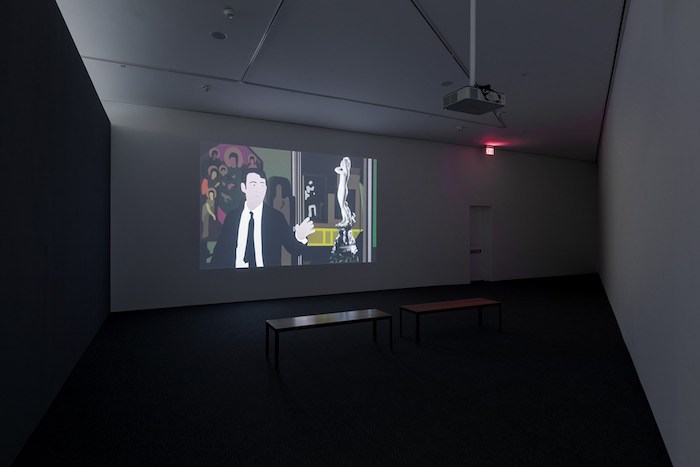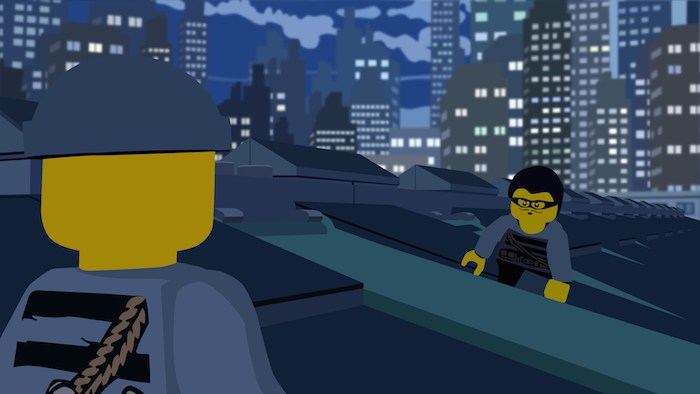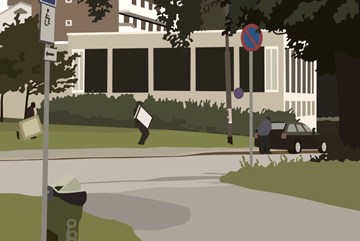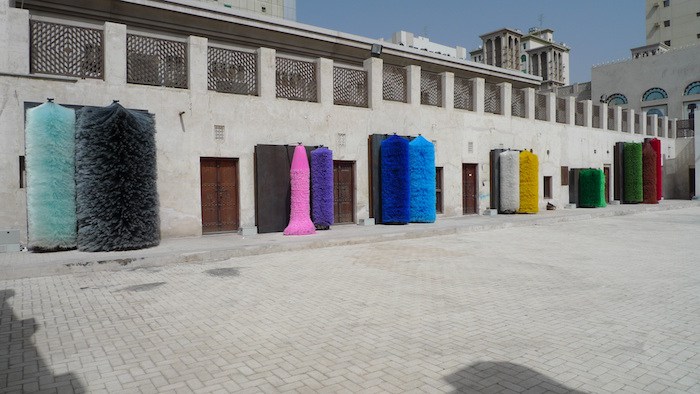
Lara Favaretto, Coppie Semplici (Simple Couples) , 2009, Installation view at Sharjah Biennial, UAE, 2009, Courtesy the Artist and Galleria Franco Noero.
First solo U.S. West Coast exhibition for Turin, Italy-based artist + first exhibit fully conceived under the direction of MCASB’s new Chief Curator Abaseh Mirvali.
“It was important that I begin my tenure at MCASB by providing a platform for an artist whose work while conceptually impeccable, so poignantly examines the human condition. I wanted to honor what moved me and share her work with the community here,” says Abaseh Mirvali, MCASB’s recently appointed Executive Director and Chief Curator.
Opening on Tuesday, February 12 (with a public reception from 6-8 p.m.) is Museum of Contemporary Art Santa Barbara’s (MCASB) newest contemporary art exhibition, a solo show featuring works spanning Artist Lara Favaretto‘s more than 20-year career. Presented in collaboration with Rennie Collection, Vancouver, Canada, this exhibition marks Favaretto’s solo U.S. West Coast institutional debut, as well as the first show initiated under the direction of Mirvali.
On view through April 28, the exhibition’s execution reflects many of the core values that Mirvali has brought to MCASB after a well-established career in the global arts circuit. “I have been following Rennie Collection for man years now since we share a similar artistic philosophy as well as social responsibility,” says Mirvali.
According to statement from MCASB, “Throughout Favaretto’s work, the artist incorporates found materials. Trash may be recycled, while lost and discarded items are re-purposed. Her installations and sculptures often show the artist’s interest for the past, the forgotten, the disregarded. Yet, Favaretto’s overall oeuvre also questions why certain objects survive over others, contemplating their legitimacy in relation to the forgotten, while exposing their inevitable destiny: wear, corrosion, erosion, and breakage. Favaretto could be regarded as the continuation of a series of 20th-century artists whose major concern was questioning the meaning of art, sometimes through play and dark humor.”
“… (Favaretto’s) artistic production—however colored by notes of Abstract Art, Arte Povera, Kinetic Art, Land Art, or Minimal Art—is composed of aspects that in addition to questioning the intellectual status of a piece of art, are also interrelated to our humaneness. Her work is ephemeral, transient, spontaneous, unpredictable, changing, and even vulnerable, like us,” says Mirvali.
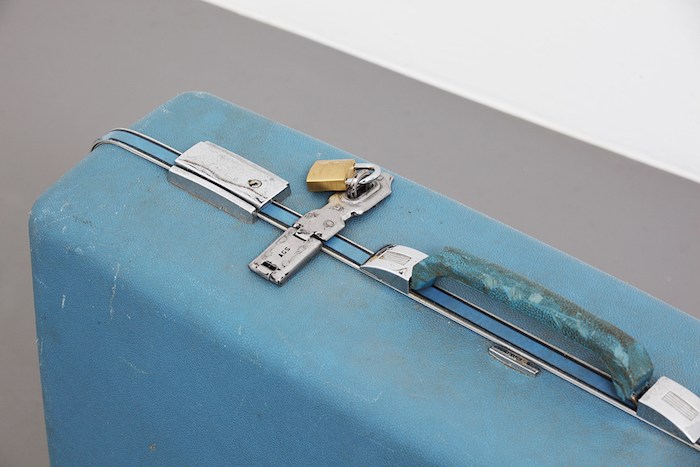
Lara Favaretto, Lost & Found, 1998, Courtesy the Artist; Rennie Collection, Vancouver, Canada; and Galleria Franco Noero, Turin, Italy, Photo by Blaine Campbell.
The exhibition will be shown across four different exhibition sites, including:
- MCASB’s main space, showing Favaretto’s installation Coppie Semplici (Simple Couples), comprised of moving car wash brushes that alternate between high-speed mechanical rotations and stagnation. Removed from their original context, the brushes spin aimlessly as they deteriorate over time. Also on exhibit in the Museum’s main space will be a work from Favaretto’s ongoing series of collected suitcases, Lost & Found. After obtaining a forgotten suitcase—found at state-run auctions of lost and found items from the Italian railway system, flea-markets, and dumps—Favaretto combines the existing contents with new, unknown items, then locks the case and throws the key away, never allowing the contents to be revealed.
-
On view in a downtown storefront (907 State St.) from Feb. 12-Apr. 28 is Tutti giù per terra (We All Fall Down), one installation of a number of works by Favaretto that follow a consistent form: sealed rooms within rooms containing industrial fans that flush tons (literally) of confetti around the space progressively. Through its materiality—or lack of it—this piece embraces a plethora of dichotomies which speak to our human condition and exemplify our binary nature: perpetuity/impermanence, noise/silence, creation/destruction, growth/decay.
- The Glass Box Gallery at UCSB will have two concrete works from Rennie Collection on view from Feb. 13-22 opening a dialogue between activity and passivity, movement and stasis, anger and boredom. Fisting and Boring are part of a series in which Favaretto uses her body to imprint a particular action in a block of recently-poured concrete. As intended by the artist, over time the blocks are subject to wear from exposure to sunlight and air. The title of each work—always a human action—captures the individual state of mind or gesture that has been performed by Favaretto. Glass Box Gallery is the UCSB Art Department’s student-run exhibition space in Building 534 (Space 1328).
-
In the Santa Barbara Funk Zone district, Favaretto will place a glossy plaque reading “Defense D’entrer,” or “Do Not Enter,” at the Museum’s future location (35 Anacapa St.), forbidding visitors to pass over the plaque. By restricting the entrance to the land, the artist raises questions regarding private property and the need to safeguard an empty lot. MCASB will announce future events to take place there over the duration of the exhibition.
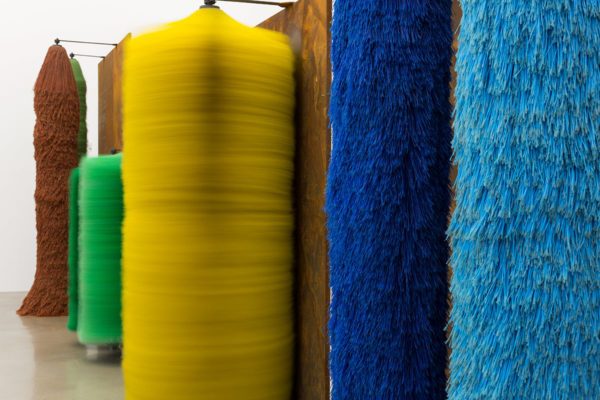
Lara Favaretto, Simple Couples, 2009, Car wash brushes, iron slabs, motors, electrical boxes, wires, site specific installation, Courtesy Rennie Collection, Vancouver. Photo: Blaine Campbell.
Favaretto’s work has been featured in solo exhibitions at Kunsthalle Mainz, Mainz, Germany (2018); Nottingham Contemporary, Nottingham, UK (2017); Rennie Collection, Vancouver, Canada (2015); MoMA PS1, New York, USA (2012); Sharjah Art Foundation, Sharjah, UAE (2012); Castello di Rivoli Museum of Contemporary Art, Turin, Italy (2005); and the Gallery of Modern and Contemporary Art, Bergamo, Italy (2002). Group exhibitions include Hammer Museum, Los Angeles, USA (2018); Walker Art Center, Minneapolis, USA (2017); Liverpool Biennial, Liverpool, UK (2016); Schirn Kunsthalle, Frankfurt, Germany (2014); Palais de Tokyo, Paris, France (2006); Museum of Contemporary Art, Los Angeles, USA (2005); and the Venetian Pavilion, 51st Venice Biennale, Italy (2005).
Museum of Contemporary Art Santa Barbara is located at 653 Paseo Nuevo. For more information, visit mcasantabarbara.org.
Originally published in Santa Barbara Seasons on February 7, 2019.

